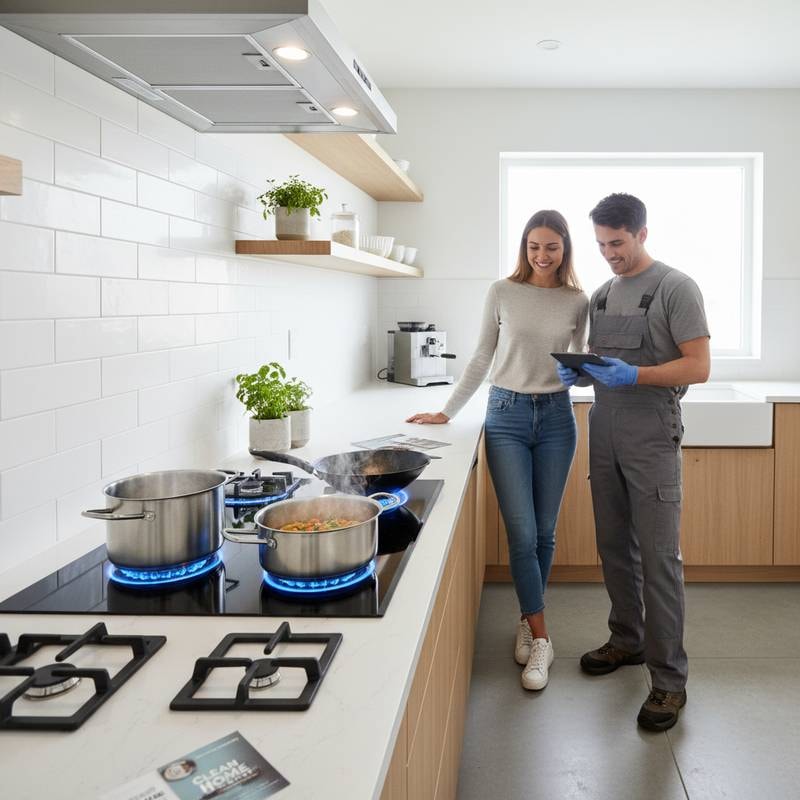The Shift to Induction: Replacing Gas in Modern Kitchens
Homeowners observe sleek glass cooktops replacing traditional gas stoves in contemporary designs. This transition extends beyond aesthetics to deliver substantial improvements in safety, speed, and efficiency. For those considering a kitchen upgrade, understanding the key advantages and preparation steps proves essential before disconnecting the gas supply.
Reasons Homeowners Reconsider Gas Cooking
Gas ranges dominated professional kitchens for years due to their visible flames, rapid heating, and fine-tuned control. However, concerns over indoor air quality prompt a reevaluation. Gas combustion releases nitrogen dioxide, carbon monoxide, and particulate matter, which can accumulate even under a functioning exhaust hood, particularly in compact or inadequately ventilated spaces.
Escalating energy expenses and the push toward home electrification further drive this change. Induction technology, previously limited to high-end applications, now provides performance that matches or exceeds gas while prioritizing efficiency and health benefits.
The Mechanics of Induction Cooking
Induction cooktops employ electromagnetic fields to generate heat directly in compatible cookware, bypassing the surrounding air and surface. Placement of a suitable pan activates an electric current in the metal, yielding immediate warmth. Lifting the pan halts the process instantly, eliminating residual heat.
This direct heating method yields several advantages:
- Rapid Performance: Water reaches a boil in approximately half the time required on gas.
- High Efficiency: Between 85 and 90 percent of energy transfers to the cookware, minimizing waste into the environment.
- Enhanced Safety: The cooktop surface remains below scalding temperatures, significantly lowering burn risks.
- Precise Regulation: Heat levels adjust without delay, replicating the responsiveness appreciated in gas cooking.
Expenses Involved in the Transition
Prices for induction appliances have decreased markedly in recent years. Budget-conscious buyers find options ranging from $800 to $1,500 for fundamental ranges or cooktops with standard features. Mid-tier selections, priced at $1,500 to $2,500, incorporate advanced controls and variable power settings for versatile use.
High-end units exceed $2,500, often featuring premium materials and integrated smart functionalities like app-based monitoring. Installation costs vary based on existing infrastructure. A pre-existing 240-volt circuit limits electrician fees to $150 through $300 for connections.
Absence of such wiring necessitates $500 to $1,200 for new circuit installation. Capping or removing gas lines adds $150 to $400, handled by a qualified plumber. Cookware must consist of ferromagnetic materials like cast iron or specific stainless steel alloys; a simple magnet test confirms suitability, potentially requiring selective replacements rather than a full overhaul.
Guidelines for a Secure Transition
Transitioning to induction demands methodical planning to ensure safety and functionality.
- Evaluate Electrical Infrastructure: Verify that the electrical panel supports a 40- to 50-amp dedicated circuit. Engage a licensed electrician for a comprehensive assessment and any necessary upgrades.
- Select Appliance Configuration: Opt for a slide-in range or a modular cooktop paired with a wall oven. Precise measurements account for induction units, which may extend deeper than gas counterparts.
- Engage Certified Experts: Employ a licensed electrician for electrical work and a plumber for gas disconnection to comply with safety codes.
- Assess Ventilation Needs: Although induction avoids combustion byproducts, retain or install a range hood to extract moisture, grease, and aromas effectively.
- Verify Cookware Readiness: Conduct magnet tests on existing pots and pans; budget for compatible alternatives to avoid disruptions post-installation.
Evaluating the Hands-On Cooking Differences
Enthusiasts of gas flames may initially question the shift to a flat, responsive surface. Users typically adapt within a few sessions, as induction delivers comparable immediacy in heat changes. Tasks such as stir-frying vegetables, maintaining a gentle simmer for sauces, or precisely melting ingredients benefit from consistent temperatures without fluctuations.
Cleanup simplifies dramatically; the smooth glass wipes down easily with a moist cloth, free from intricate grates or soiled burners. An occasional electromagnetic hum or subtle click may occur at peak power levels, a benign characteristic that diminishes with familiarity.
Assessing Enduring Benefits
The superior energy transfer in induction reduces monthly utility expenses through minimized waste. Kitchens maintain cooler ambient temperatures, easing the load on cooling systems during summer. This efficiency contributes to overall household comfort and lower operational costs.
Properties equipped with all-electric systems, including induction, attract buyers seeking sustainable features. Certain locales provide financial incentives, such as rebates up to $1,000, to encourage the shift from fossil fuel appliances, directly alleviating initial investments.
Implementing Your Induction Upgrade
To proceed, consult a local electrician for an on-site evaluation of electrical readiness. Review induction models within your budget, prioritizing those aligned with daily cooking needs, such as multiple burner sizes or boost functions for quick searing.
This upgrade represents a strategic enhancement to kitchen operations, prioritizing health, precision, and sustainability for lasting satisfaction.










